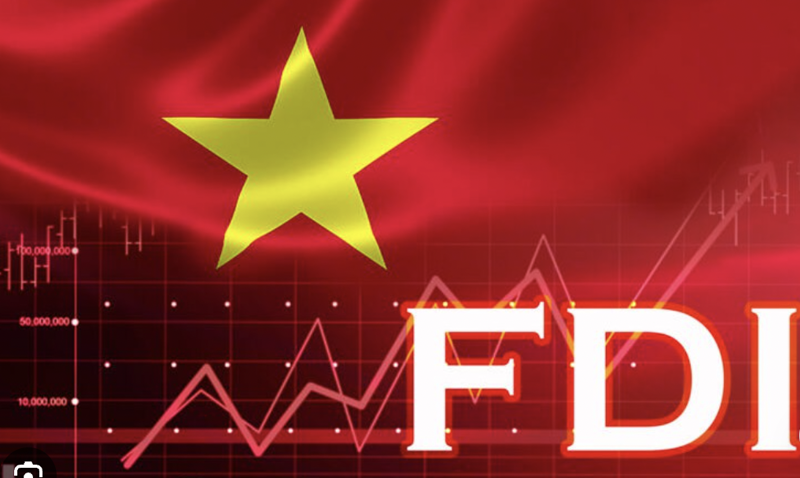
Thống kê
| 1882754 | |
| Số người đang online | 1 |
| Số truy cập hôm nay | 165 |
| Số truy cập tháng này | 57895 |
Quảng cáo
4.520 / 5.000 VinaCapital: "As long as the tax on Vietnamese goods is not 10% higher than that of other countries, FDI will still be strongly attracted"

|
As long as the tax on Vietnamese goods is not 10% higher than that of other countries in the region, the advantages in labor quality, costs, demographics and geographical location will continue to help Vietnam maintain its position as an attractive destination for global manufacturers and FDI flows for many years to come.
After a phone call with General Secretary To Lam on Wednesday evening (July 2), President Donald Trump announced that the US had reached an agreement on reciprocal taxes with Vietnam, which is also the first agreement of the US with a country in the Southeast Asian region.
The average tax rate of 20% that the US imposes on imports from Vietnam is in line with market expectations and is a significant improvement compared to the reciprocal tax rate of 46% announced by Mr. Trump on April 2.
The VN-Index reacted slightly positively at mid-day on Thursday (July 3), although industrial and export stocks fell slightly. Meanwhile, in the US, shares of companies such as Nike, Under Armour and retailers directly involved in importing goods from Vietnam rose in price in the trading session on Wednesday.
Commenting on the Vietnam-US trade agreement, VinaCapital expects that the final agreement will apply tariffs on a product-by-product basis, in which products made 100% in Vietnam will be subject to significantly lower tariffs.
"When the agreement is officially announced, we will analyze the potential impact of those tariffs in more detail. In the meantime, we believe that the 10% tariff currently applied to Vietnam's exports to the US, with exemptions for most electronics, will continue to be maintained until the agreement officially takes effect," VinaCapital said.
Another important element of President Donald Trump’s announcement is the imposition of a 40% tariff on “transhipping” goods.
A recent report by Harvard University estimated that the rate of “transhipping” goods ranges from a low of 2% to a high of 17%. While some media outlets cited an earlier Harvard report that put the rate at around 14%.
The Vietnamese government has been actively addressing the issue of “transhipping” goods since the first Trump administration, and is likely to further strengthen controls in the coming period. However, it should be noted that the concept of “transhipping” is not clearly defined, and how it is defined in the final agreement will be key to assessing the practical impact of this provision.
Preliminary analysis of the impact on Vietnam's economy, according to VinaCapital, although this announcement is initially positive, it is not expected to have a major impact on the economy in the short term, for a number of reasons.
First, exports to the US are expected to slow down in the second half of 2025 after increasing by nearly 30% in the first half - largely due to US retailers increasing purchases during the 90-day suspension of reciprocal tariffs.
Second, foreign direct investment (FDI) in Vietnam remains very high. Total registered FDI in the first 5 months of 2025 exceeded 15 billion USD, up nearly 50% year-on-year and equivalent to more than 7% of GDP.
In the absence of a final agreement, as long as the tariff on Vietnamese goods is not higher than 10% compared to other countries in the region, the advantages in labor quality, costs, demographics and geographical location will continue to help Vietnam maintain its position as an attractive destination for global manufacturers and FDI flows for many years to come.
Vietnam's growth in 2025 will be mainly driven by internal factors such as increased public investment spending on infrastructure, the recovery of the real estate market, along with important administrative reforms and initiatives - referred to by some experts as "Doi Moi 2.0".
"This initial announcement is a positive step forward for both countries. The 20% tariff is lower than the 46% tariff announced in April, which helps to reduce some of the uncertainty that has been hovering around the market. We are waiting for the official announcement of the final agreement to fully assess the potential economic impact.
In the meantime, the policies and actions that the Vietnamese government is implementing and plans to implement in the second half of this year and in the coming years will play a more pivotal role than exports in boosting growth and achieving the set targets," VinaCapital emphasized.
|
Liên kết website
Hỗ trợ trực tuyến
-
 Liên hệ ngay.Email:ĐT: (08) 6682 3335 - Fax: (08) 6256 2218
Liên hệ ngay.Email:ĐT: (08) 6682 3335 - Fax: (08) 6256 2218
Ngày giờ hiện tại
13/9/2025
clock




